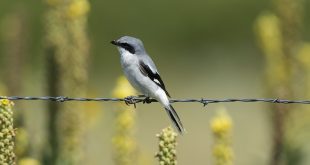In the animal kingdom, maternal behaviors vary widely across different species.
Enlarge
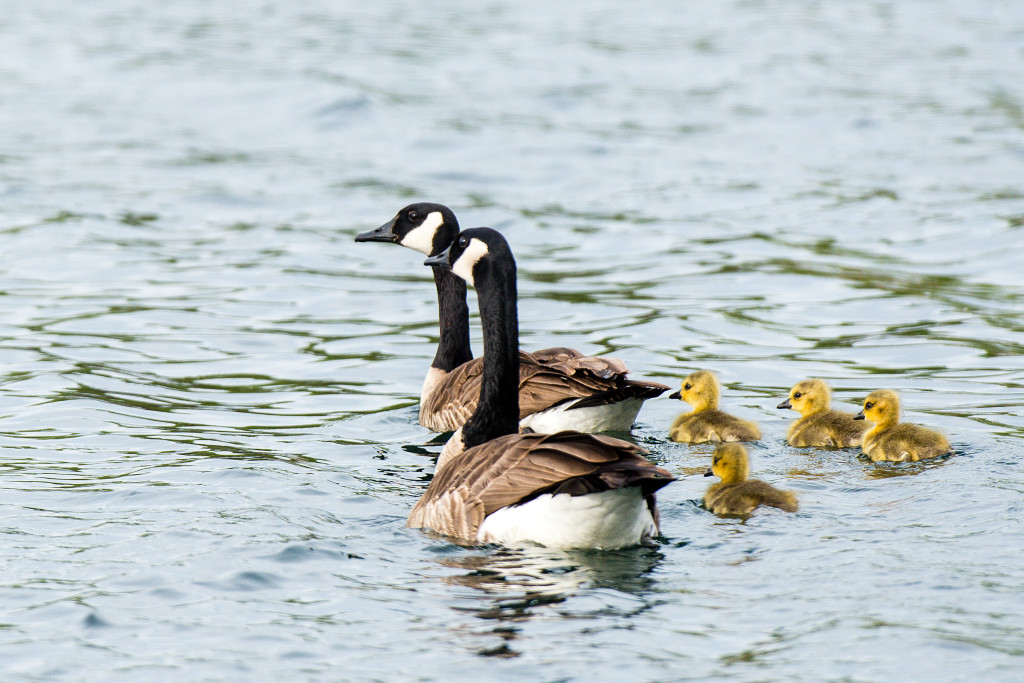
Photo by Justin Haag
By Monica Macoubrie, Wildlife Education Specialist
Mother’s Day is a celebration of the nurturing, unconditional love and sacrifices mothers make for their children. In the animal kingdom, maternal behaviors vary widely across different species, highlighting the diverse strategies animals use to care for their offspring and ensure their survival. These different approaches to motherhood provide a broader perspective that is worth celebrating on Mother’s Day.
Killdeer (Charadrius vociferus)
Killdeer (Charadrius vociferus) are small, wading birds known for their distinctive calls and striking plumage. They are a common sight in open fields, grasslands and shorelines across Nebraska.
A notable aspect of killdeer parenting is their use of distraction displays to protect their offspring. When a predator approaches the nest, one or both parents may perform a “broken-wing” display, in which they pretend to have an injured wing, dragging it on the ground and limping away from the nest. This tactic draws the predator’s attention away from the nest, allowing the eggs or chicks to remain safe. Once the predator is lured far enough from the nest, the killdeer parent flies away unharmed.
Killdeer nests are typically simple, shallow scrapes in the ground, often lined with small stones, grass or other debris to provide some camouflage. The choice of nesting location is critical, as it helps conceal the eggs from predators. Both male and female killdeer share incubation duties, taking turns sitting on the eggs to keep them warm and protected.
Once the eggs hatch, the killdeer chicks are precocial, meaning they are born with their eyes open and are capable of walking and feeding themselves almost immediately. The parents guide the chicks to food sources and keep a watchful eye on them as they learn to fend for themselves. Despite the chicks’ independence, the parents remain vigilant, guarding the young from predators and ensuring they stay safe.
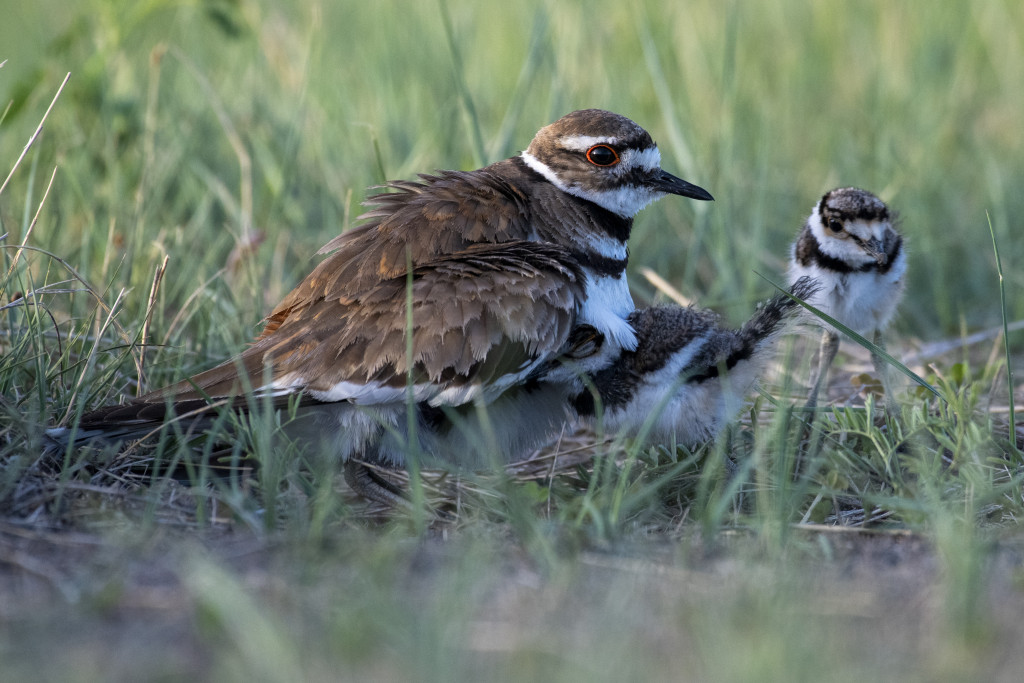
Eastern Cottontail Rabbit (Sylvilagus floridanus)
Eastern cottontail rabbits are a common species found across North America. Females typically give birth to several litters per year, each containing an average of 4-6 kits. To ensure the survival of her offspring, a mother rabbit, also known as a doe, takes great care in selecting a suitable nesting site, often choosing areas with thick vegetation or tall grasses to provide natural camouflage.
Once the doe finds an appropriate location, she digs a shallow, bowl-shaped nest called a “form,” which she lines with fur plucked from her own body and soft vegetation to keep the kits warm and protected. The doe covers the nest with a layer of leaves, twigs and other debris to further conceal it from predators.
After giving birth, the doe spends minimal time at the nest to avoid drawing attention to it. She nurses the kits only once or twice a day, usually at dawn and dusk, and just for a few minutes each time. Despite the infrequency of feedings, her milk is rich in nutrients, allowing the kits to grow quickly. This strategy not only ensures the kits receive adequate nourishment but also minimizes the risk of predators detecting the nest.
The kits are born blind and hairless and begin to open their eyes and grow fur within a week. By two to three weeks old, the kits are ready to venture out of the nest and start foraging for food.
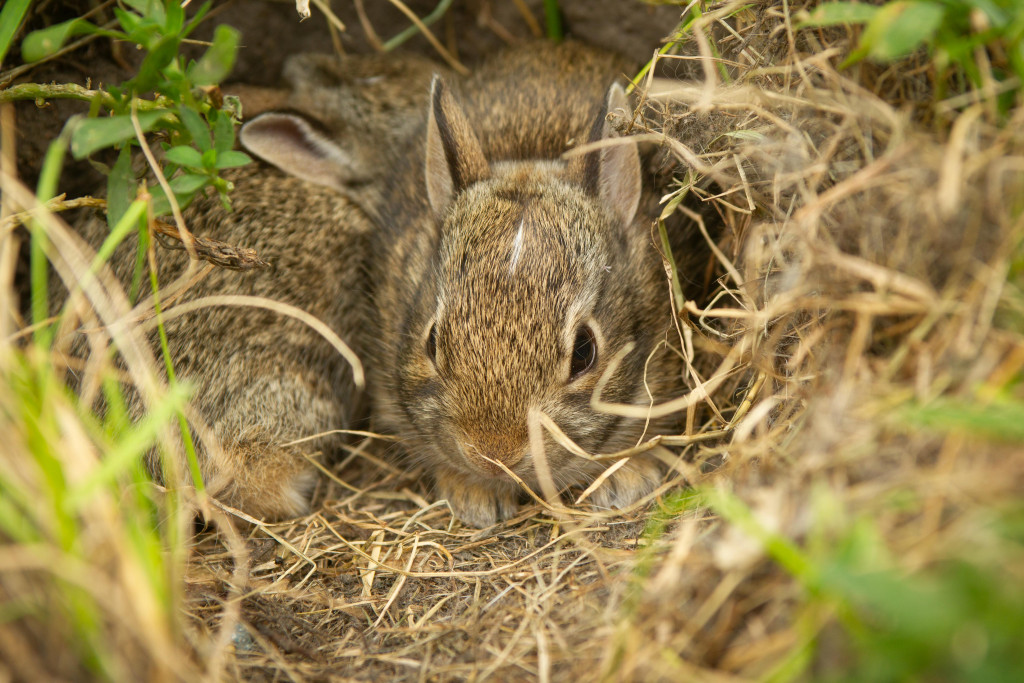
Common Snapping Turtle (Chelydra serpentina)
Common snapping turtles are freshwater turtles known for their distinctive large size, powerful jaws and rugged appearance. When it comes to mothering strategies, these turtles follow a more independent approach compared to some other species in the animal kingdom.
In late spring or early summer, the female snapping turtle embarks on a journey to find a suitable nesting site. This journey can take her several kilometers away from her aquatic habitat to sandy or loose soil, often near water bodies. Once she finds a suitable location, she uses her hind limbs to dig a hole, typically around 8 to 10 inches deep. The hole serves as a nest where she will deposit her eggs.
After laying anywhere from 20 to 40 eggs, the female covers the nest with soil and leaves, providing some protection and insulation for the developing embryos. Once the nest is covered, the female snapping turtle leaves the eggs to hatch on their own, providing no further parental care.
When the eggs hatch, the hatchlings must dig their way out of the nest and find their way to water without any guidance or protection from the mother. This journey can be dangerous, as they are vulnerable to predators such as birds and mammals. Despite a lack of direct parental care, common snapping turtles have evolved strategies to maximize the survival of their offspring, such as choosing nesting sites that are less accessible to predators and laying many eggs to increase the likelihood of successful hatching.

Wolf Spider (Family Lycosidae)
Wolf spiders are ground-dwelling arachnids known for their unique hunting and reproductive behaviors. Although they are solitary creatures, female wolf spiders exhibit remarkable mothering strategies to ensure the survival of their offspring. After mating, the female wolf spider lays her eggs in a silken egg sac that she carefully constructs. This egg sac is a round structure that provides protection and a stable environment for the developing eggs.
The mother wolf spider attaches the egg sac to her spinnerets and carries it with her wherever she goes. This attachment ensures that the eggs remain safe and protected from predators and adverse environmental conditions. By carrying the egg sac, the mother can control the temperature and humidity around the eggs, optimizing the conditions for successful development.
Once the eggs hatch, the young spiderlings emerge from the egg sac and climb onto their mother’s back. The mother wolf spider carries her spiderlings on her back, protecting them from harm and providing them with warmth and security. This maternal behavior allows the spiderlings to safely explore their surroundings and begin hunting small prey.
The spiderlings remain on their mother’s back until they are ready to venture out on their own, which can take a few weeks. During this time, the mother continues to hunt and care for her young, ensuring they receive the nourishment they need to grow and thrive.
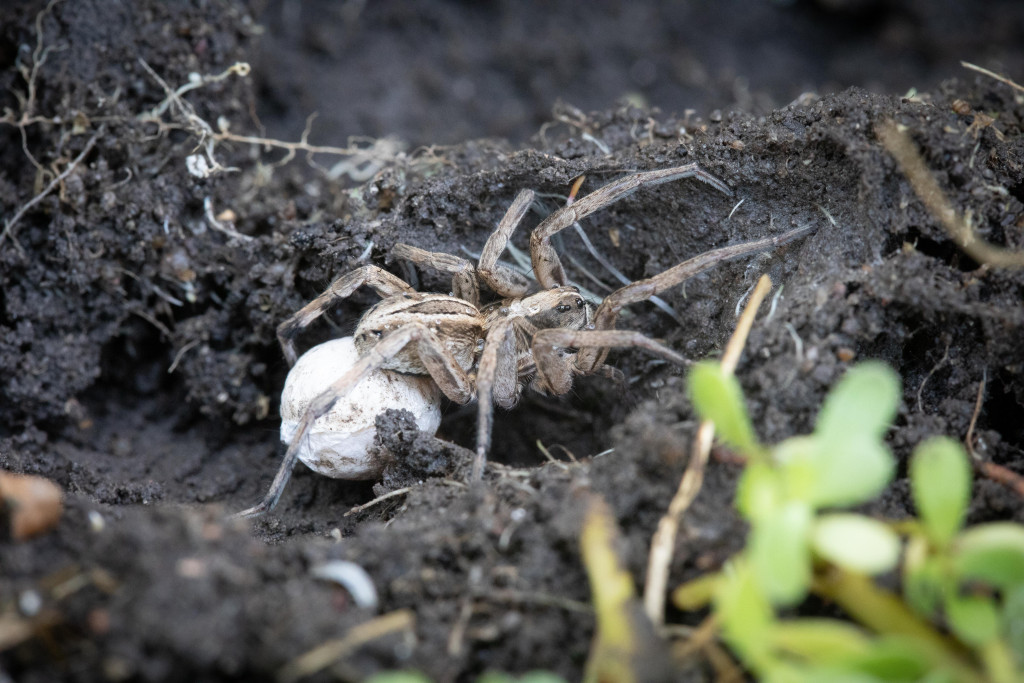
Mothering strategies in the animal kingdom offer glimpses into the resourcefulness and resilience of animal mothers as they adapt to various environments and challenges. Whether through intensive nurturing or allowing their young to be independent early on, each approach demonstrates a mother’s instinct to protect and support her offspring. On Mother’s Day, as we celebrate the mothers in our lives, we can also reflect on the universal themes of sacrifice and dedication found across the natural world.
 Nebraskaland Magazine
Nebraskaland Magazine


